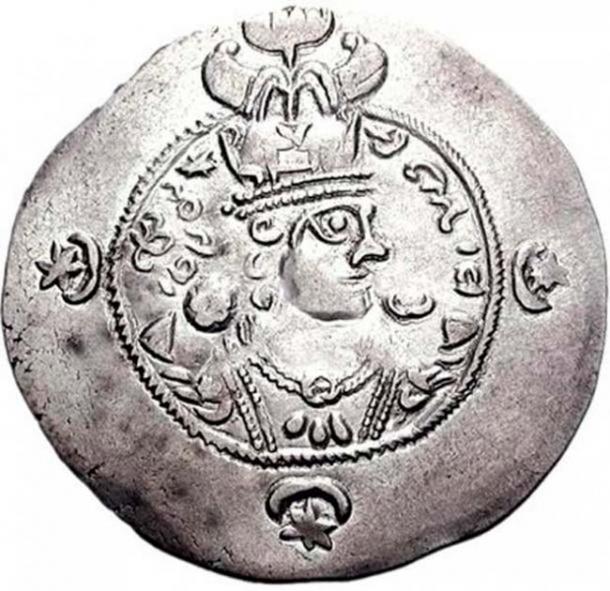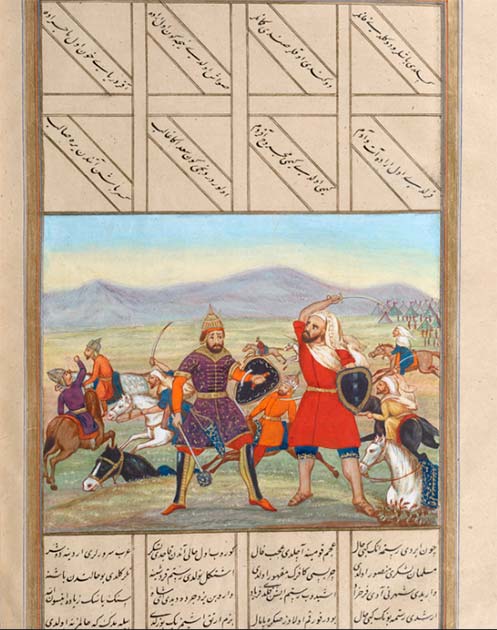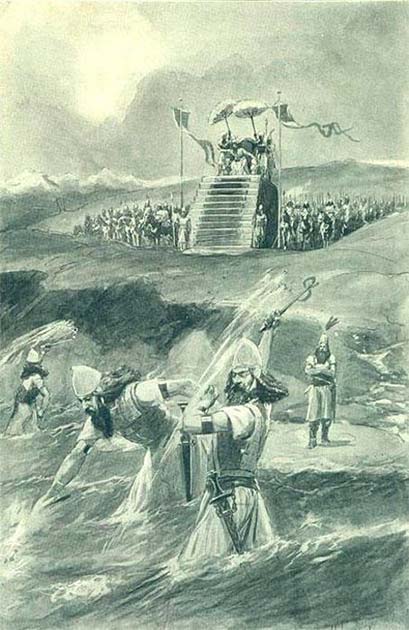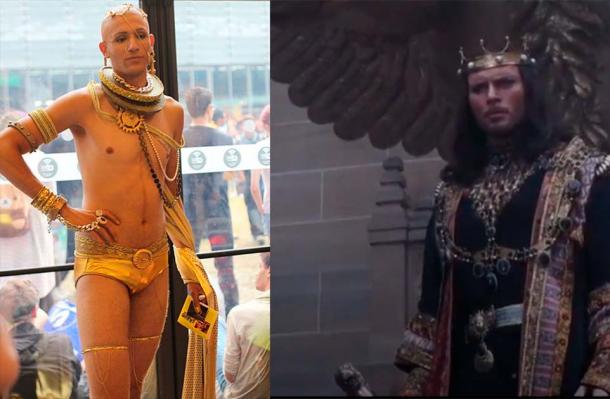The New Prince of Persia Game is Announced. How Does the History Stack Up?
The popular, but almost archaic Prince of Persia video game franchise is back, with a new game, and a new hero on the scene. So what’s the new backstory, who is this new hero, and is there any basis in real history.
Prince of Persia is a video game franchise originally created by Jordan Mechner. In 2010, the video game was adapted into an action fantasy film Prince of Persia: The Sands of Time. Now, after 13 years, the Prince of Persia is back in a new adventure game, to be released in 2024 - ‘The Lost Crown’. A new hero, Sargon, has arrived to rescue the kidnapped prince who is held captive. This was a game series that was loved, and perhaps will be again. So, if any, is the story of a real Prince of Persia?
Persian Characters of Film and History
Prince Dastan from the movie is based on a character from Persian mythology known as Rostam Dastan. This hero of Persia is drawn from a real historical person named Rostam Farrokhzad who was the brother of the Persian king Yazdegerd the Third and the commander of his army in the Sasanian Empire. Yazdegerd the Third was the 38th (and last) king of the Sasanian Empire of Iran, from the year 632 to 651. His name means “Made by God” and he ascended the throne after a series of internal conflicts.

Coin of a young Yazdegerd III. (Classical Numismatic Group/CC BY-SA 1.0)
As for Rostam Farrokhzad, apart from being the chief of the army, he is also a character in the Persian epic poem “Shahnameh”. Rostam was a member of the House of Ispahbudhan, one of the seven Parthian clans. In the “Shahnameh” he is described as “sagacious, warlike and one who had been a conqueror. He was a calculator of the stars, of great perception; and he listened deeply to what his counselors advised”.
- The Early Rulers of Persia, Part I: The Pishdadian Dynasty
- Ancient Persian Inscriptions Link a Babylonian King to the Man Who Became Buddha
In the “ Decline and fall of the Sasanian Empire: The Sasanian-Parthian Confederacy and the Arab Conquest of Iran”, Rostam is described as follows: “A man endowed with extraordinary energy, a good administrator and a fine general”. He is said to have fought in many successful battles.

17th-century Shahnameh illustration of Rostam Farrokhzad. (Public Domain)
Legends say that during the final day of the battle against the Arabs, Rostam’s army faced a terrible sandstorm. While Rostam used a camel loaded with weapons as shelter to avoid the sandstorm, Hilaal ibn`Ullafah accidentally cut the girdle of the load on the camel. He had no idea that Rostam was behind it, so the weapons fell on Rostam and broke his back.
Half dead and paralyzed, Rostam was beheaded by Hilaal. Hilaal then brought the head of Rostam before the rest of the warriors and shouted: “I swear to the god of Kaaba that I have killed Rostam!” The Sassanid soldiers were highly demoralized and the commanders lost control of their army. After Rostam’s death, Yazdegerd III was murdered in 651 by Mahuy Suri, and the Arabs quickly conquered Khorasan.
What about the new hero, Sargon?
The new character pitted against the mythological beasts and characters in the upcoming game is ‘Sargon’, who is tasked with rescuing a new prince character, Prince Ghassan. Sargon is a pretty strong name historically, with Sargon of Akkad, creator of the mighty Akkad empire way back in 2334 BC by far the most famous historically. So, is Sargon another Persian Prince? Well, it seems not. He is a skilled warrior and one of The Immortals, coming to the rescue. According to Mechner in an interview with The Gamer magazine:
“The games so far have at least four different protagonists, each embodying the role or idea of the ‘Prince of Persia’ in their own way, and potentially in different places centuries apart,” They’re not claiming to all be the same person. Sargon is a new character.”
So, the truth seems to be, there were many Princes of Persia, and the games do not stick with just one. Rather, it is the idea and traits of a Persian Prince that are used in the character, not a set historical figure.
Persia’s King Xerxes the First, and More Persian Battles
However, one well-known historical figure which might be seen as the quintessential Persian warrior king, is King Xerxes the First. His name means “Ruling over heroes”. He was the 4th “king of kings” of the Achaemenid Empire and he ruled from the year 486 BC until his assassination in 465 BC at the hands of Artabanus, the commander of the royal bodyguard. The phrase “king of kings” means “high king” or “great king” and it was adopted into Persian while having Semitic origins.
Xerxes the First is the Persian king identified as Ahasuerus in the Book of Esther from the Bible. He is also known for the invasion of Greece in the year 480 BC. Like his predecessor, Darius the First, Xerxes ruled over the Persian Empire at its territorial apex. However, Xerxes managed to conquer even more land of mainland Greece than Darius the First through his battles at Thermopylae and Artemisium.

Xerxes attending the lashing and "chaining" of the Hellespont (Illustration from 1909). (Public Domain)
Xerxes was the son of Darius the First and Atossa, the daughter of Cyrus the Great. He was crowned and succeeded his father in the year 486 BC when he was about 36 years old. The transition of power to Xerxes was smooth due to the great authority of his mother, Atossa. His accession to power was not challenged by any person. Immediately, Xerxes crushed the revolts in Egypt and Babylon that had broken out the year before.
At the Battle of Thermopylae, a small force of Greek warriors led by King Leonidas of Sparta resisted the much larger Persian army, but they were finally defeated. After the military campaigns in Greece, Xerxes returned to Persia and oversaw the completion of many construction projects left unfinished by his father at Susa and Persepolis.

Image of King Xerxes I of Persia from his tomb at Naqsh-e Rustam. (CC BY-SA 2.0)
In the year 465 BC, Artabanus assassinated Xerxes with the help of a eunuch named Aspamitres. Artabanus was the commander of the royal bodyguard and the most powerful official in the Persian court.
The rock-cut tomb at Naqsh-e Rustam, copying that of Darius the First, is usually assumed to be that of Xerxes.
- Babak Khorramdin – The Freedom Fighter of Persia
- The Enigmatic Six Kings of the Earth Fresco Uncovered
Influence on Fantasy Genre games and film
Throughout time, there have been many cultural depictions of King Xerxes.

Brazilian actor Rodrigo Santoro played Xerxes in the 300: Rise of an Empire 2014 (ActuaLitté, CC BY-SA 2.0) Right: One Night with the King, starring Luke Goss as Xerxes. (Screenshot Freemovies/123movies)
Probably the most well-known appears in the movie “ One Night with the King” where Xerxes is portrayed by Luke Goss. Xerxes is also featured in the 2014 film entitled “300 : Rise of an Empire”. This movie is based on two battles - the Battle of Artemisium and the Battle of Salamis.
The Timeless Attraction of the Prince of Persia
The Prince of Persia franchise has inspired various films and media over the years, captivating audiences with its action-packed adventures and rich storytelling. The most notable adaptation is the 2010 film "Prince of Persia: The Sands of Time," starring Jake Gyllenhaal as Prince Dastan. The movie brought the video game's immersive world to the big screen, introducing a wider audience to the franchise's iconic characters and thrilling plotline. Additionally, the success of the video game series influenced numerous other action-adventure games, paving the way for a new generation of interactive storytelling in the gaming industry.
Ubisoft’s recently announced release date for Prince of Persia: The Lost Crown, in January 2024, for Playstation, Xbox, Nintendo Switch, and PC platforms offers new hope and adventure for fans of the franchise.
The enduring appeal of the Prince of Persia universe can continue to inspire and entertain audiences across different media platforms, leaving a lasting legacy in the realm of fantasy and adventure.
Top image: Prince of Persia: The Lost Crown game hero, Sargon. Source: Ubisoft
By Valda Roric
References
Claflin, W. H. History of Persia. From the Sassanids to the 20th Century.
Olmstead, A.T. History of the Persian Empire.
Peters, J. 2023. Ubisoft is making a new side-scrolling Prince of Persia game. Available at: https://www.theverge.com/2023/6/8/23754342/ubisoft-prince-of-persia-the-lost-crown-release-date
Pourshariati, P. Decline and fall of the Sasanian Empire: The Sasanian-Parthian Confederacy and the Arab Conquest of Iran.
Roric, V. From History to Mystery.




















Comments
Strange that the use of Persian iconography is not more widespread. We applaud the long Greek epics and yet the Persians hold many of great lengths and philosophical questions to boggle the mind.